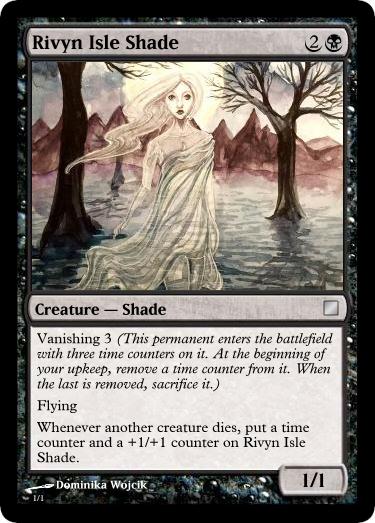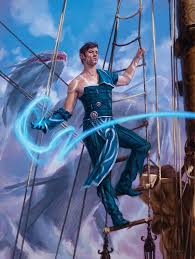Are you a Quiet Speculation member?
If not, now is a perfect time to join up! Our powerful tools, breaking-news analysis, and exclusive Discord channel will make sure you stay up to date and ahead of the curve.
As the year winds down, now strikes me as a good time to look back and reflect on the investments I made and didn't make this year as well as the things about MTGO finance that surprised me along the way. I initially began keeping track of my investments in a portfolio precisely to keep a record that I could learn from. As I look back now, I can identify some things that I wish I had done differently, and I hope that sharing my own failings and musings will prove valuable to you, my readers. Having a copy of my portfolio open may prove helpful (be sure to unhide all the rows).
(1) Not Pulling the Trigger on Bulk Rares
This year there were quite a few bulk rares and near-bulk rares that shot up and would have yielded significant returns. I invested in a few such cards (Key to the City, Lifecrafter's Bestiary, Resilient Khenra, Rhonas's Last Stand, Grind//Dust), but I did not pull the trigger on Bomat Courier or Baral's Expertise, both of which would have made incredible investments.
I actually set a price alert for Courier at $0.03, but it only ever dropped to $0.05, so I never picked them up. That brings me to something I'll probably discuss later: a new set's release is a good time to go back through your price alerts, see which cards never made it to those prices, and reconsider picking them up at that time. Following up on insights you have earlier is really important, and failing to do so cost me this year. Fumigate is an interesting case, and one that I'm not too mad at myself about, since similar cards in Standard's past like End Hostilities never really shot up like Fumigate has. Nevertheless, at several points I could have picked up Fumigate for $0.10, yet I didn't even consider doing so.
I've learned that I need to be more liberal in speculating on strong rares that cost between $0.01 and $0.10. Even if I decide just to put a dollar in, I should put a dollar in! The risk is just too minimal, and the reward too great. Moving forward, I'll be more likely to pickup cards like Captain Lannery Storm, Growing Rites of Itlimoc // Growing Rites of Itlimoc, Daring Sabateur, and Deadeye Tracker when they fall below a dime. This is especially true of small sets.
(2) Overzealously Sticking by my Target Buy Prices
Under this heading I'm identifying two distinct sorts of mistakes that I hope to avoid in the future. First is the mistake I made with Glint-Sleeve Siphoner and Supreme Will: I stuck very closely to my target buy price, with the consequence being that I didn't get as many copies of each card as I would have liked. I invested in Rishkar, Peema Renegade and Glint-Sleeve Siphoner at the same time, intending to get 75 copies of each. I ultimately reached about 80 copies of Rishkar, yet only got 40 copies of Glint-Sleeve Siphoner. I'm happy with the number of Rishkars I ended up buying, but I realize that I should have taken the time around Amonkhet's release to buy the remaining copies of Glint-Sleeve Siphoner, even if $0.05 or $0.10 higher than I would have liked. This was the same mistake I made with Bomat Courier.
The other mistake is one where a card stays below my target buy price for a long time, and so I keep buying copies and buying copies until that card is over-represented in my portfolio. I had only wanted to buy 25 copies of Hour of Devastation, for example, yet I ended up with 50. Last month I repeated this error – there's also no excuse to have spent so much on Legion's Landing // Adanto, the First Fort so quickly. The moral of this story, I think, is to buy copies of your targets slowly if you're relying on the natural cycles of Standard finance as I do. Reason dictates that Legion's Landing // Adanto, the First Fort won't permanently shoot up in price just one or two months after release, so there's no reason to get all excited and buy 50 copies instead of 4 or 10 copies. My approach in investing in other Ixalan cards, especially the Ixalan lands, has shown a greater levelheadedness that will result in higher margins.
The other moral I drew from this mistake is to be cognizant of the total amount of dollars you've invested into any one card. Earlier this fall I created the "total input" column in my portfolio to help me make decisions that lead to a balanced portfolio.
(3) Not Investing in Lands
I was wrong about these lands, and I should have invested in 25 or 50 copies of each. I was fortunate to see my error quickly enough to invest in two of them, but I definitely hurt my Amonkhet season portfolio by not making these lands the backbone of my investment in Amonkhet block. Rare land cycles are just always going to exhibit growth now that we don't have fall blocks that last forever. All land cycles other than the painlands from Born of the Gods to the present, have exhibited solid growth and represent a safe and conservative way to invest in MTGO. Much of the reason my Kaladesh season speculations proved to be so good (a rate of return of 120 percent!) is that I invested heavily in the fastlands.
(4) Not Keeping Capital on Hand
This is less something I failed to do this year and more something that has come up continually in my time investing in MTGO, and it is something that I am struggling with now after deciding in late October to use money earned from investing to buy into Legacy. I think it's wise to set aside a certain amount of money for investing and a certain amount of money aside for playing. You don't want to invest so much that you're left with a small number of tickets, because that (i) makes you less happy playing Magic and (ii) inhibits your ability to invest optimally going forward. Always invest within your means and with purpose.
Shading Off
That's it for this week. I'm happy to field any questions you have about my portfolio and investment decisions this year. I tried to cover some of the lessons I've learned this year and hope they prove insightful and helpful for you. I'm also happy to read any lessons y'all have learned from speculating on MTGO this year that you'd like to share.
Today, I'd like to share a card from a custom set I'm making – although I'm still finalizing the set's architecture and mechanics, this is one of my exploratory cards I think is likely to make the final cut.



















